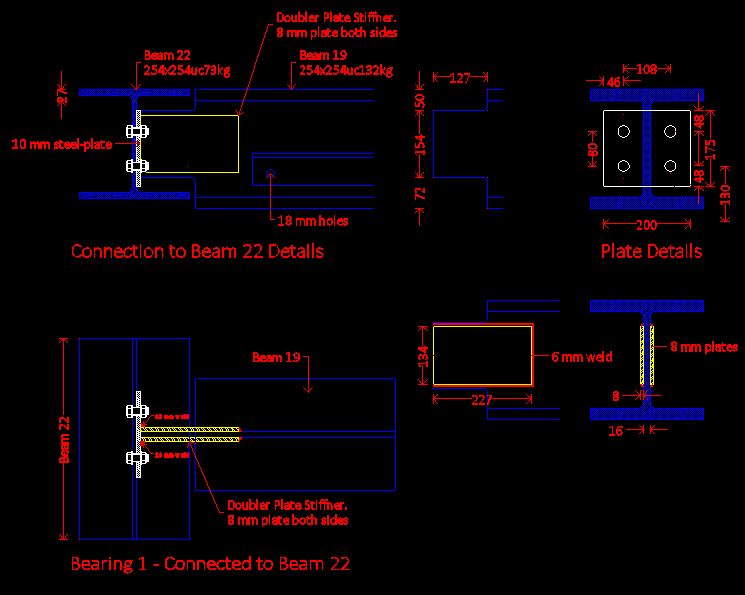Dear Engineers
I am designing a partial-depth end-plate for a beam that is double-notched and is carrying High Shear across the notched section and want to add a plate to the web of the supported beam to increase its cross-sectional area.
I am using the Eurocodes and the check I am performing on my beam may be refered to as 'Check 5' of the SCI-P358 publication - Page 28 and 29. I have yet to find a publication detailing the requirement of stiffening a beam (offers of links to publications are always welcome) so I am unsure on how to include the stiffner in my calculations.
My questions are:
Do I simply add the cross-section area of the stiffner resisting shear to the 'Shear Area' of the calculation?; and for the weld: how would I proportion the shear-action in the welds of the stiffner? I am guessing the stresses would be shared in proportion to the individual plates shear-areas.
Regards - Dan
I am designing a partial-depth end-plate for a beam that is double-notched and is carrying High Shear across the notched section and want to add a plate to the web of the supported beam to increase its cross-sectional area.
I am using the Eurocodes and the check I am performing on my beam may be refered to as 'Check 5' of the SCI-P358 publication - Page 28 and 29. I have yet to find a publication detailing the requirement of stiffening a beam (offers of links to publications are always welcome) so I am unsure on how to include the stiffner in my calculations.
My questions are:
Do I simply add the cross-section area of the stiffner resisting shear to the 'Shear Area' of the calculation?; and for the weld: how would I proportion the shear-action in the welds of the stiffner? I am guessing the stresses would be shared in proportion to the individual plates shear-areas.
Regards - Dan


